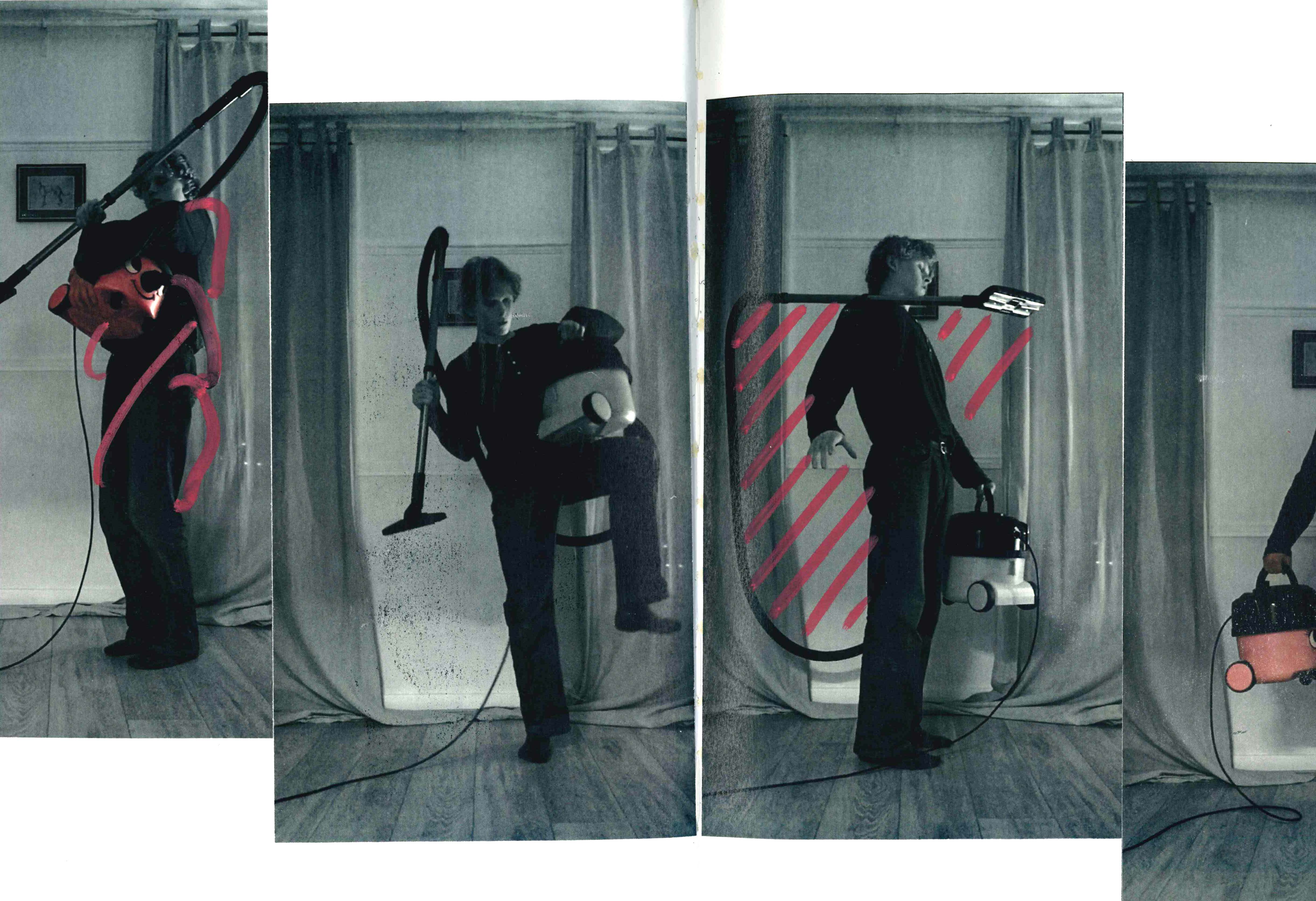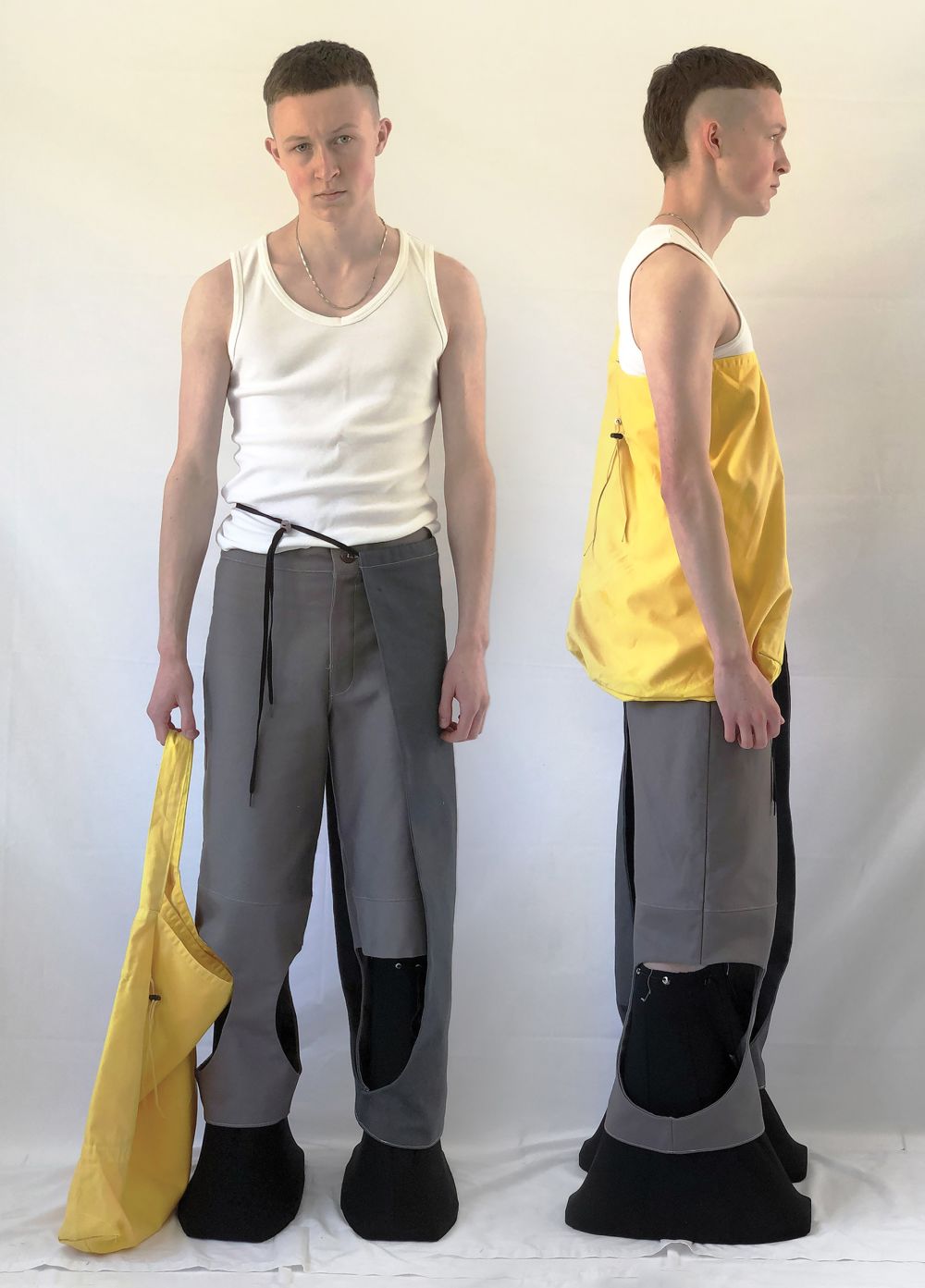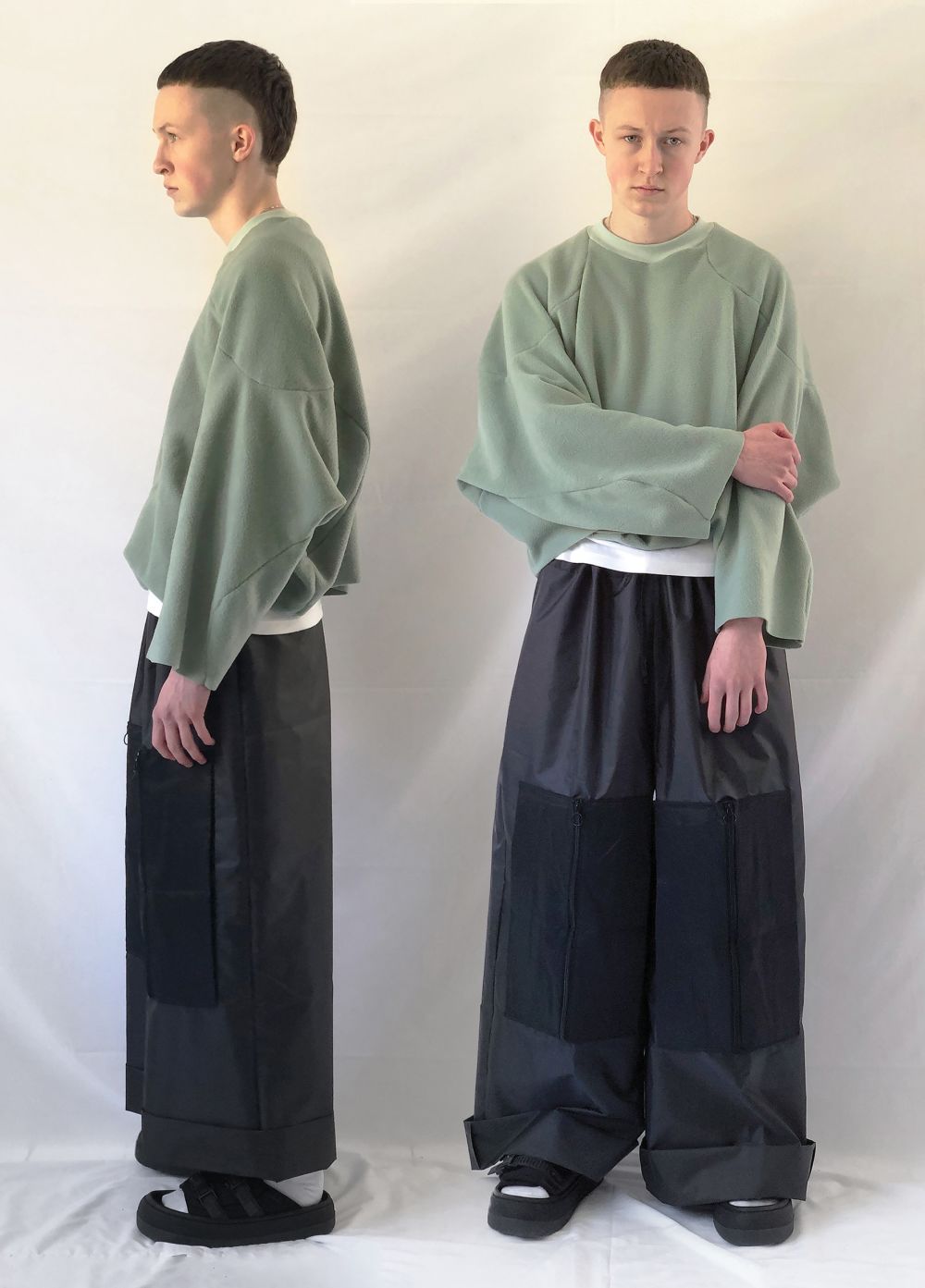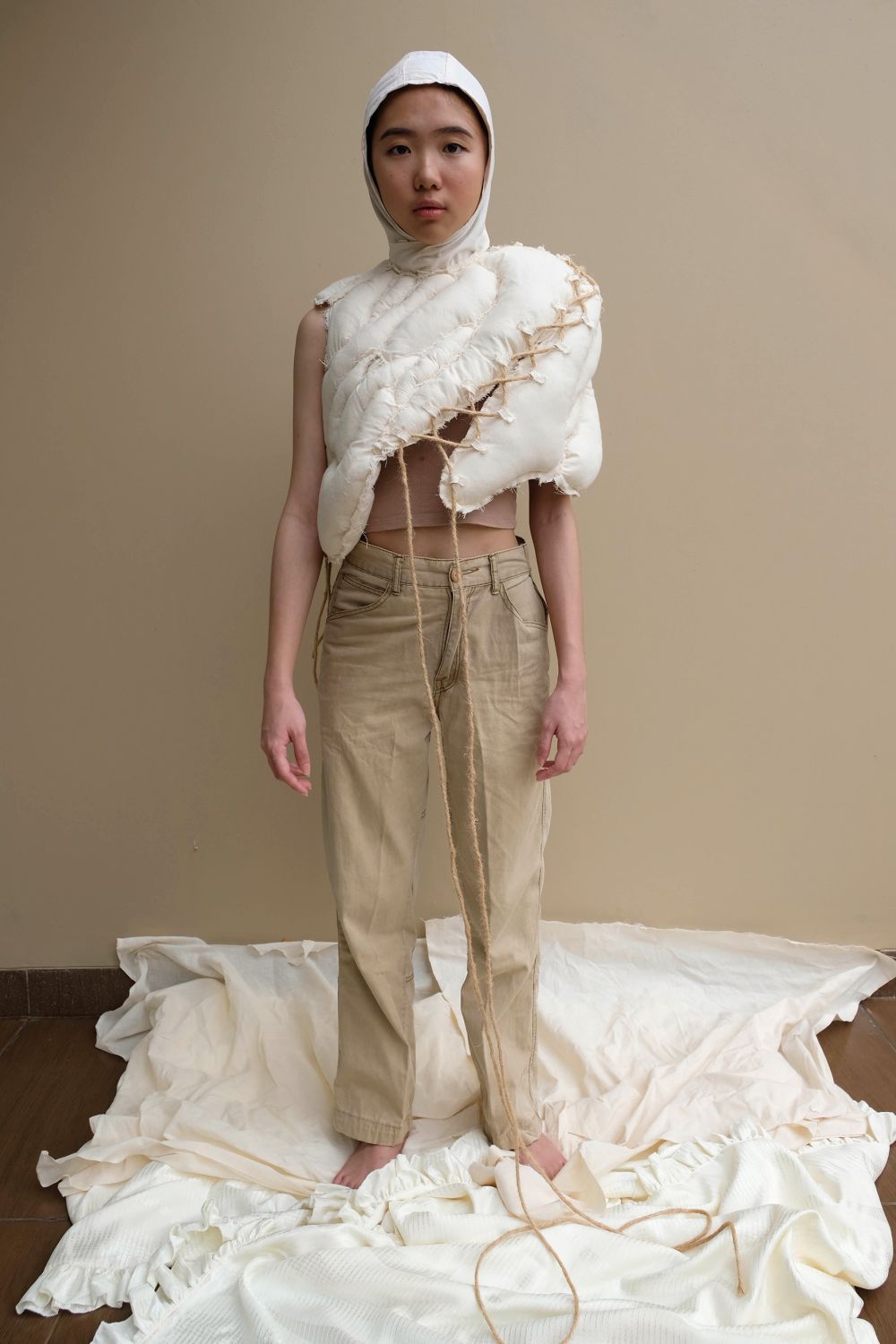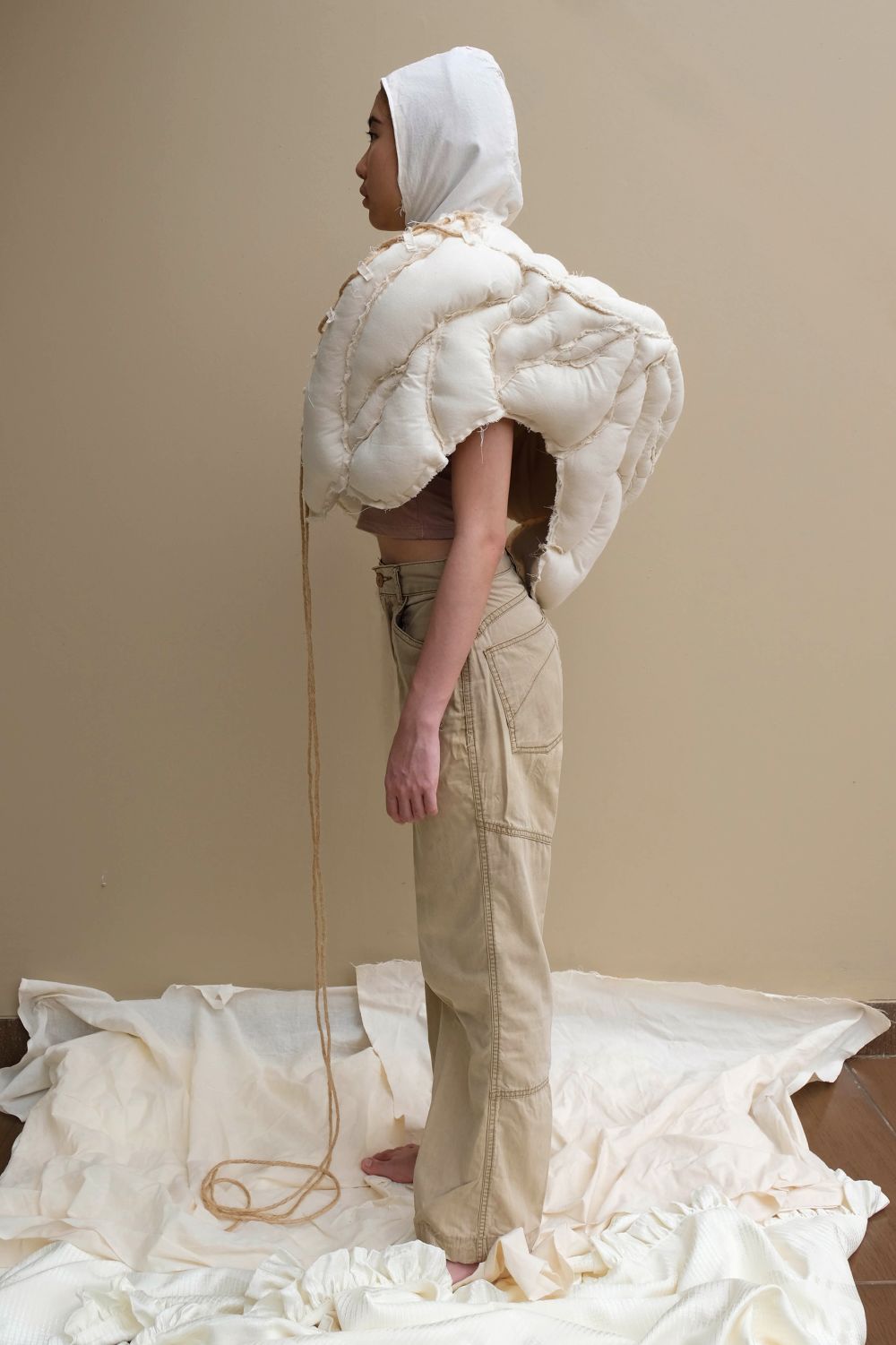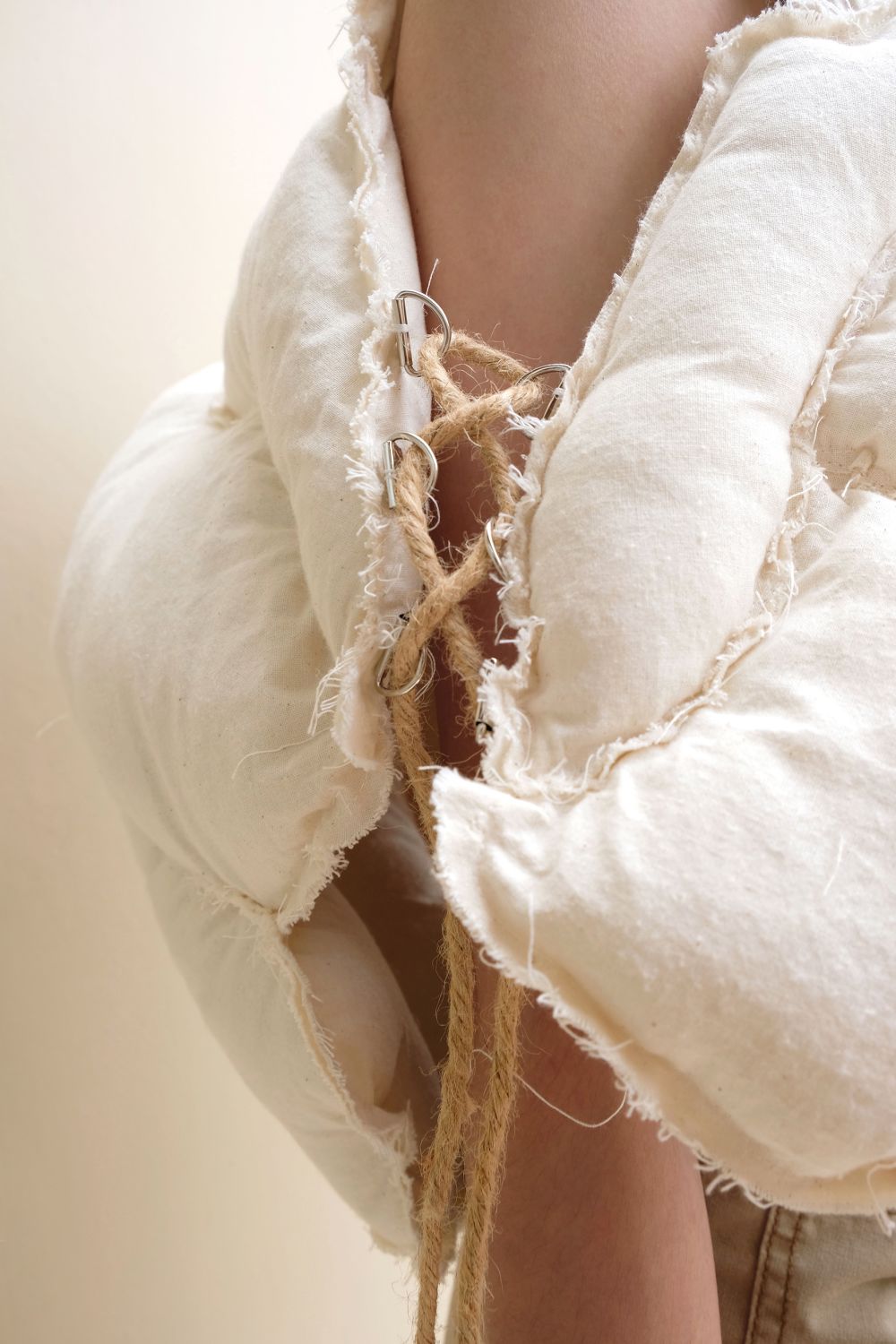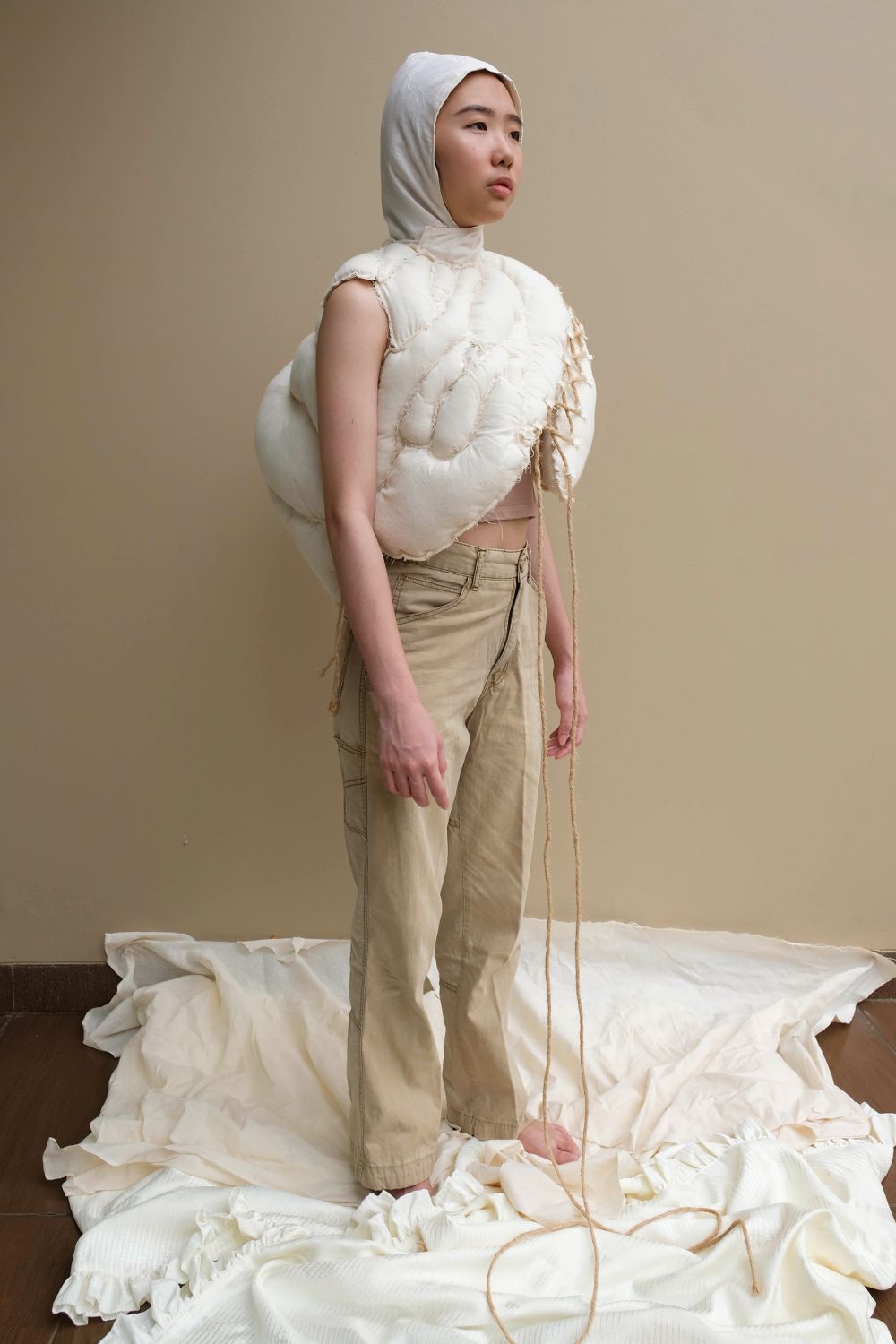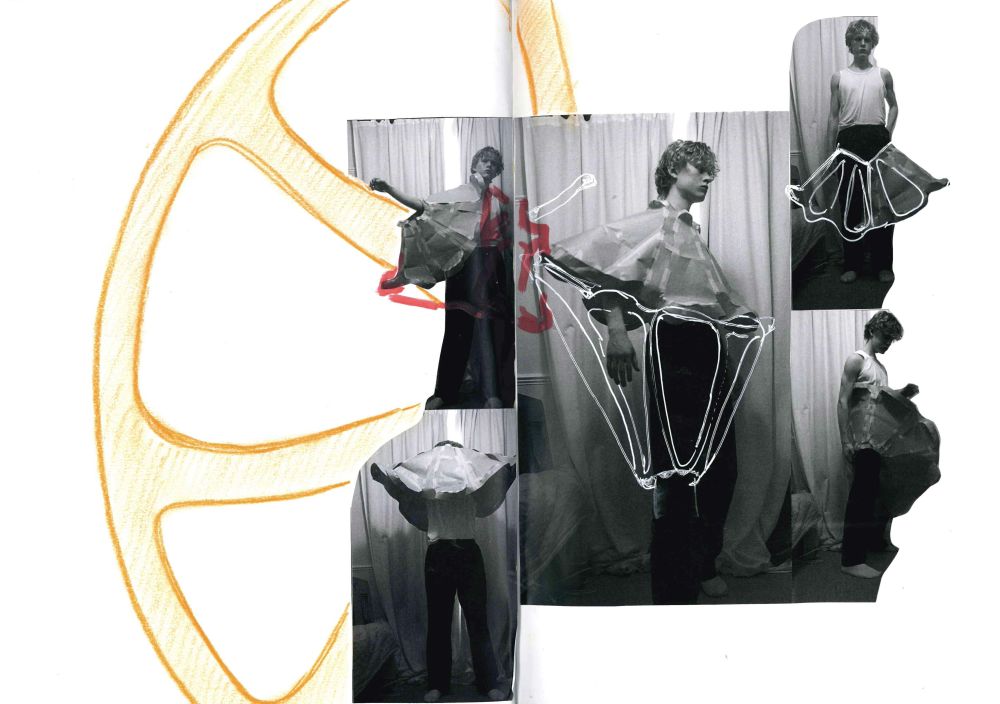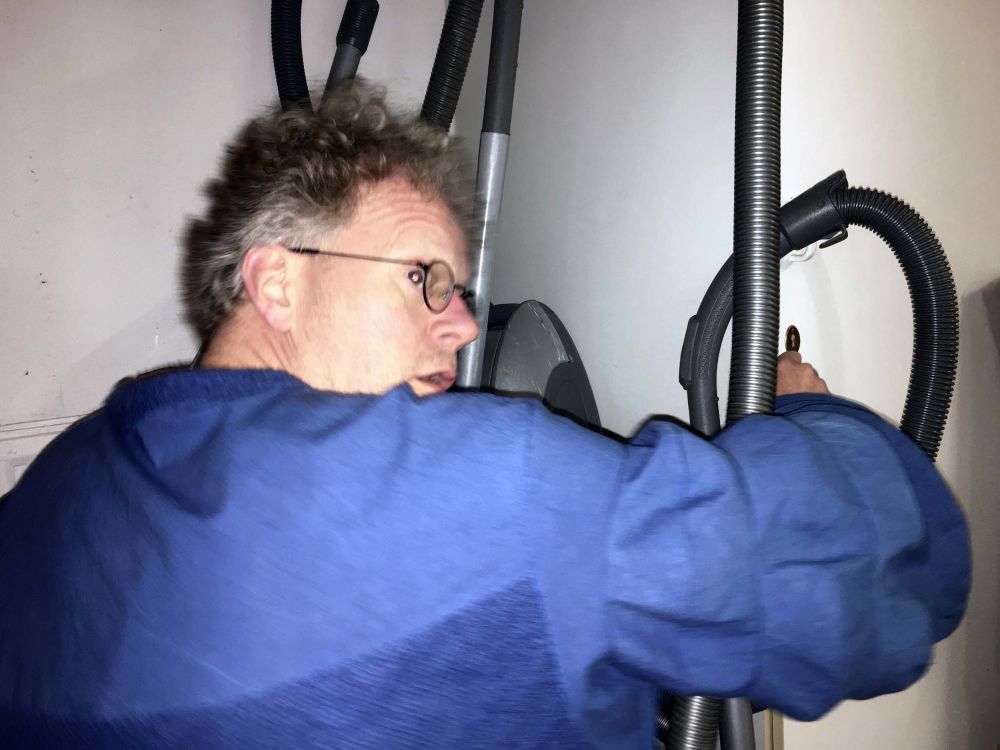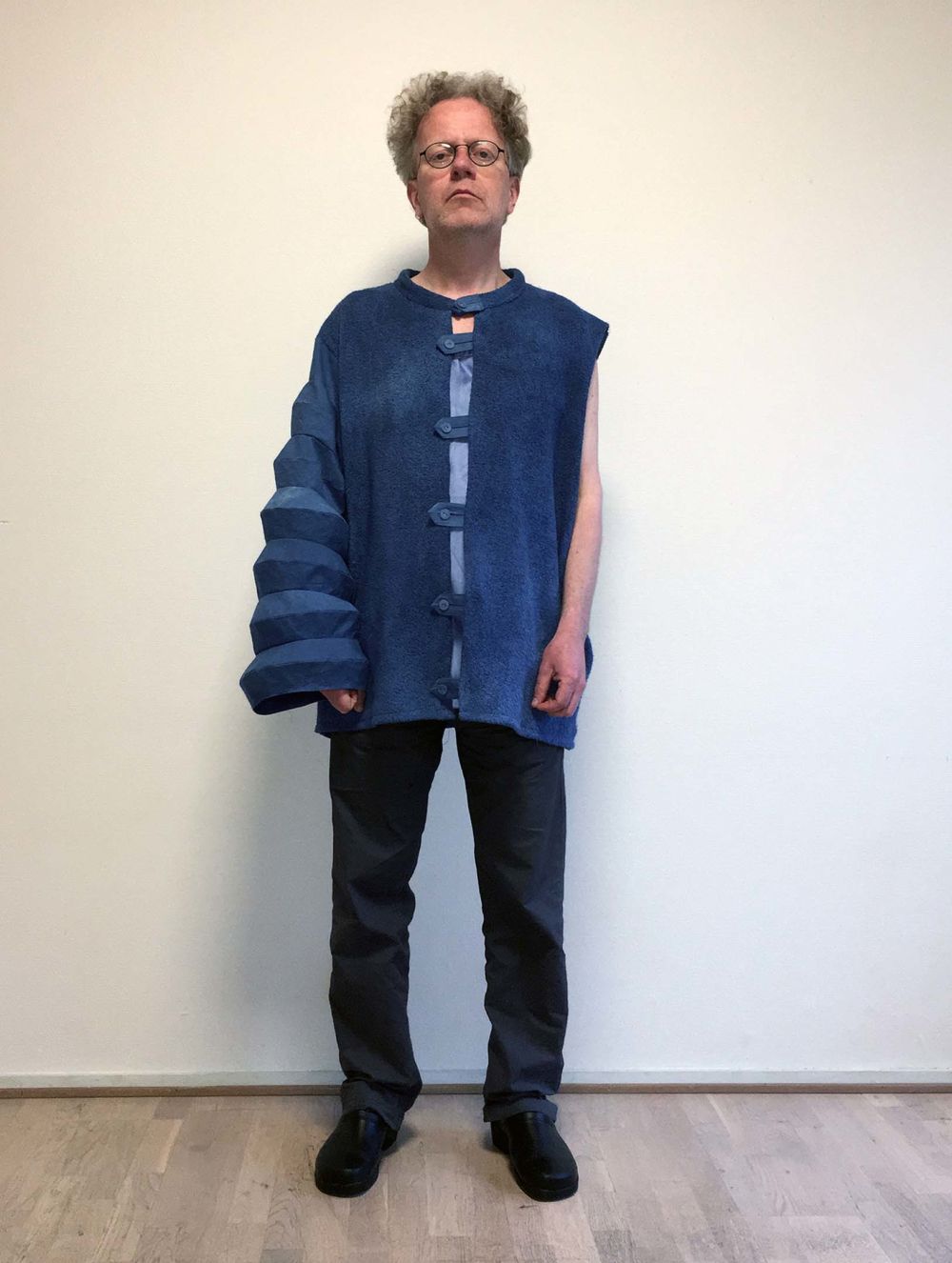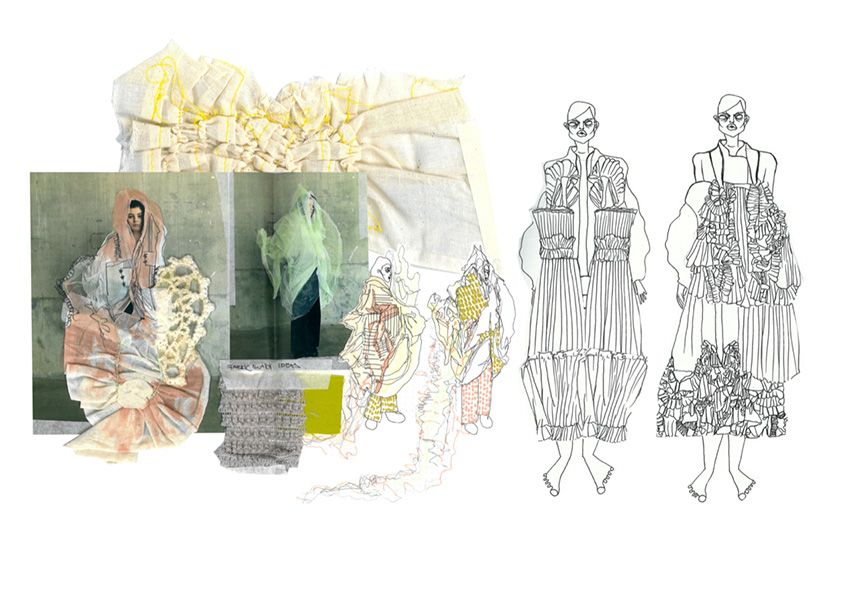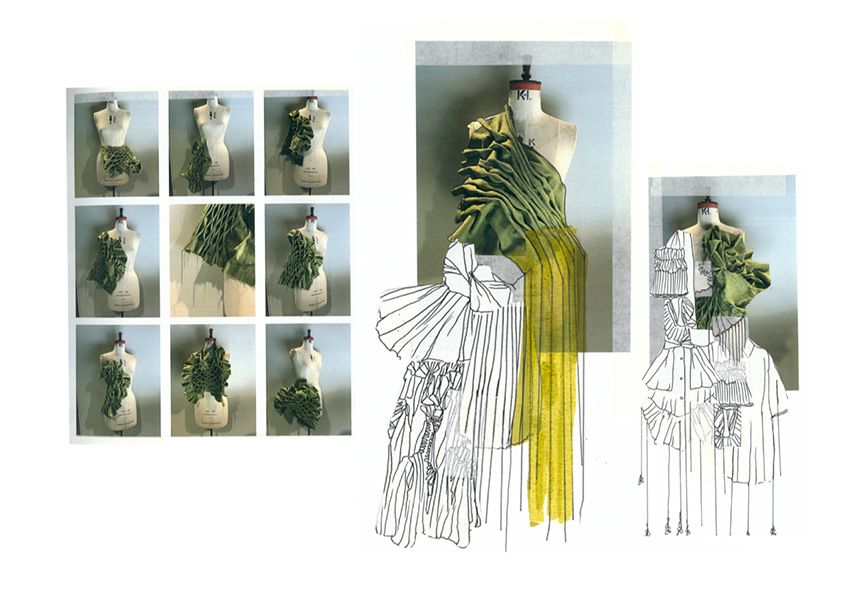As our 2020 Foundation students head to the next stage in their creative education, we catch up with them (and their tutor) to hear about their final projects and look back over a year unlike any other.
"Our students have been a committed and lively group," says Jo Simpson, Curriculum Area Leader for Fashion and Textiles, "they’ve worked really well together collaboratively, especially during ‘live’ projects with Bianca Saunders, Paul Kindersley and Damien Poulain.
"The collaborative process has enriched these students' working relationships and this has been increasingly noticeable in the current coronavirus pandemic during which our students have been dispersed back to their homes around the world. They have been in touch with one another using digital platforms throughout this period of time and supporting each other while continuing to work on their final projects. We’re really proud and amazed at what our students have produced this year."
Matthew Empringham, frydays
In a project that is both satirical and sincere, Empringham's frydays is inspired by holidays in Britain specifically "the greasy chips and rain, escapism and grey skies". Created for what the designer describes as "the hostile coast", the garments combine elements of beachwear and wetsuit construction made with heavy fleece, nylons and neoprene.
"I've been to these coastal towns many more times than a person should, yet they continue to fascinate me. Everyday rules are put on hold, it's somewhere that promises escapism and delivers it in bizarre way. Carefree holidaymakers, sunburn, harsh weather and increasing deprivation all sit side by side. I find that contrast really interesting, the clash of brightness and bleakness. I wanted the project to be emotive, yet also grounded in reality – using materials such as fleece for when it clouds over, and waterproof fabrics, for when it ultimately rains. I guess I like the honesty of it.
"Everything has slowed down since lockdown. I had less access to materials – toiles were made out of old bedsheets and both final looks used repurposed fabrics and natural dyes. It was challenging but the end result was more thoughtful, resourceful and sustainable. It was also cheaper. I'm still trying to get used to the change, but I think there are definitely positives that can be taken from this whole experience."
Matthew Empringham will be studying BA Fashion Design at Central Saint Martins next year.
Kennard Bahar, A Sherpa’s Ba(g)ck
Inspired by hiking trips, Bahar researched the overlooked role of sherpas as expert guides and support around Everest. He also explored the stories of Shackleton in the Antarctic looking at how mountain-wear affected the journeys of early explorers. The result is a Using neutral tones to reflect the natural terrains, I took created forms to reflect the landscape's contours, fitted hoods from Shackleton and the loads carried by sherpas.
"I have always liked the idea of stepping into territory where no one has ever ventured. Somewhere natural, away from man-made structures and being faced with life or death situations. It fascinates me how the designer could create gear for a place that was very alien to them and which they haven’t experienced.
"Working at home in Indonesia has been one of the biggest restrictions on this project. I no longer had access to the workshops or equipment that I needed. My project turned into something that I would never have expected. I no longer depended on materials found in art stores, but used found objects such as frame hooks for fastenings or pillow stuffing and old shirts. Being in self-isolation for two weeks gave me space to think and do things more slowly and thoroughly... I had this huge realisation that being creative is not about having the right materials, but the right mind and ideas."
Next year, Kennard Bahar will be studying BA Textile Design at Central Saint Martins.
Adam Faurschou, The Global Suck
This project was inspired by the vacuum cleaner as an object that embodies the meeting point between Jean Baudrillard's philosophy 'hyperreality' and Surrealism. A visit to Tate Modern's Dora Maar exhibition provoked Faurschou to explore the relationship between the Surrealists and Jean Baudrillard:
"The way I see it, both the artists and the philosopher investigate what reality is. Baudrillard sees a tendency in the present that the things we consume must be more real than real; hyperreal. For example, an apple-flavoured product tastes more intensely of apples than real apples do. Documentaries portray historic events as more hectic and action-filled than they were. The colours we see on TV and in adverts are edited to look more colourful than they are in reality. The world has become more real than real.
"One of the Surrealists' aims was to comment on reality by using the sub-conscience. I think the vacuum cleaner is an object that both says a lot about our subconscious needs and desires while showing how the world has become hyperreal... My aim for this project was to make a full garment with whatever fabrics I had. Situations like this might be restricting, but at the same time I feel that restrictions breed creativity. Being creative is about finding new solutions and thinking originally, no?”
Next year, Adam Faurschou will be studying BA Fashion Design at Central Saint Martins.
Mia Coco Chambers, Dior
In this project, Chambers envisioned herself as Creative Director of Dior. She considered how an individual could follow a company's traditions and aesthetic while retaining a sense of self.
"This project is my statement about young creativity. Going into the fashion industry takes a lot of luck, determination, talent and connections. Many young and talented designers have the skills and ideas to change the industry but they don’t get the opportunity. My project was a way of showing that people at any age, even with limited resources can still bring beauty into this world even at a time like this.
"I have loved and learned to adore every designers' unique take on Dior and wanted to take my shot at it. How could I interpret Dior's floral imagery without making it look like something I pulled out of my grandma's closet? Doing this by using inspiration from both my childhood and culture to bring myself to the iconic Dior silhouettes and themes.
"My dad sells tea so I could access floral teas and experiment dying fabric with them or having tea interwoven in the fabric. There was my grandma's table which was covered in the dustiest floral crochet. One of the largest inspirations would be my favourite play Hamlet, specifically its use of floral imagery within the play to show hidden meanings and characters' intentions. John Everett Millais's painting Ophelia was an inspiration for the colour palette for this collection.
"I think the isolation had positive and negative impact on this project. Firstly, I was trapped in my thoughts. Dangerous, I know, but I didn’t have any distractions so lost myself in exploring every avenue. I had to learn to trust my own instincts and judgements. The negatives were not being around other people. If someone is doing something good over there, I have an innate competitive drive and that has always been my style of working. Not only in competition with others but in a constant battle with myself. Without that competition, I felt a bit anxious if I was behind others? Doing less work? Being not as experimental as I could be?
Mia Coco Chambers will be studying BA Fashion Design at Central Saint Martins next year.
